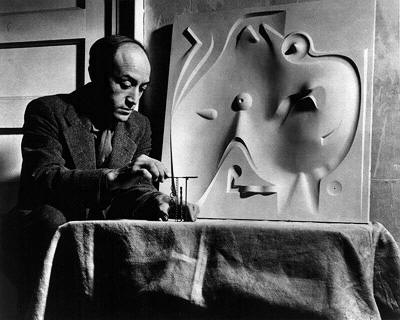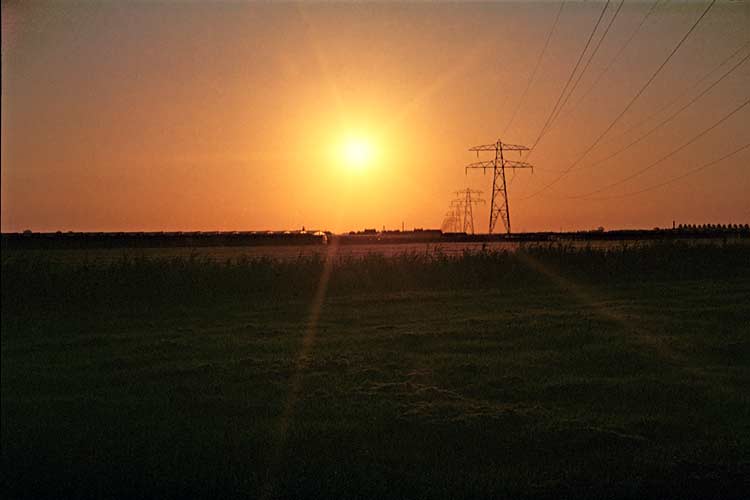cv | works | sculptures | site specific | environmental | land art | architectural | publications | exhibitions | symposia/lectures | cities | encounters | accounts
"Land and land in art", an interview about A sculptor's views on land art.
LAND ART a definition to be distilled from the views on land art of the sculptor
land art - land mark
an interview with the sculptor
What is land art for you? I know that lot of different artists take part in this movement, what is land art for you as a sculpture?
Which artist you think to be the most important in land art movement? Why?
According to you, what is the difference between land art in past, today and future? What kind of future of land art do you expect?
What do you think, will land art sometimes become an art for professionals - I mean now days different kinds of artists take part in this movement, will it change? Will it be divided from other artists except land artists?
The location for the Walburg Project as photographed by me a few years before I was asked in 1971 to propose a location for a land work (formulated by the town as "een kunstwerk" (a work of art) which will fit in its surroundings and be functional - which became the Walburg land Art Project. One of the power line pylons was on the plot of land, which I chose for the land art project. It reminded me of the Watts Towers by Sam Rodia, in Los Angeles.
answers
1. What is land art for you? I know that lot of different artists
take part in this movement, what is land art for you as a sculpture?
Land Art is not only a form of sculpture, for me it is sculpture.
I like to do large land art projects because it uses the environment
and changes it. Art in the landscape and art as landscape is public
art. It reaches far more people than the usual works that hang or stand
in living rooms or museums. Landscapes and urban open spaces belong
to us all, and landscape projects are works of art that can be experienced
by everyone, every day.
When land art incorporates living materials,
like grasses and trees, they grow with the people and age with them.
Land art can make use of the materials which are inherent to the landscape:
rock and rocks, earth, sand and water. Also the weather can be a part
of land art — think of Lighting Field by Walter De Maria, a land
art project incorporating lightning by attracting it with stainless
steel pointed rods.
Land art is as old as humanity, it's only
recently that we call it art. Perhaps the same motives played a role
in prehistoric times as they do in present day interventions in the
landscape. Religion and art have a common goal necessitating an environment
for ritual. Where religion needed to evoke the spiritual emotion, art
bases its interpretation on intellectual, but also intuitive behavior.
In the present time, art has been defined to such extent that it has
been rationalized, analyzed and categorized.
Land art distinguishes
itself from its surroundings as an artifact differs from a natural rock.
Its surroundings are preferably a natural setting. Human interaction
draws attention to a new perception of an environment. Sadly, most human
dealings with nature disregard and destroy it.
Characteristic for
land art is, in my opinion, the use of local materials and rearranging
them in such a way that a new, contemplated situation results. Introducing
foreign materials or objects would change the notion of land art. Pouring
asphalt down a hill does not fit in this concept.
Land art in a city
would lose its complementary function.
2. Which artist you think
to be the most important in land art movement? Why?

contoured playground - courtesy Wikipedia
I think Isamu Noguchi is the first land-artist. He made sculpture —
using the land as a medium. The term "land art" was coined twenty years
after he designed his Contoured Playground, in 1941. It was a forerunner
of later works of art which were categorized as land art. In 1947 he
made a proposal for a sculpture to be seen from Mars. Later he realized
various projects using materials of the land.

Sculpture to be Seen from Mars - in fact an earthwork
In 1947 Isamu Noguchi made a model, as a proposal, for a monumental earthwork to be visible from mars (to be viewed from Mars). From space it would be symbolic for a human face, but on earth it would have been a juxtaposition of plateau mound s (one with an elliptical crater), two cones and a pyramid, comparable to the ones in Egypt.

Roden Crater - courtesy Wikipedia
James Turell is creating one of the most important pieces of land art with his Roden Crater volcano project in Arizona, USA. This project not only incorporates the earth, but connects it to the solar system. When it is finished it will be the best examples of land art, as the land is land because everything above it is something else.
I think Noguchi’s to be viewed from Mars and Turell’s Roden Crater are the two greatest examples of land art — one (Turell) for being on earth and perceiving the light and space from our solar system — and the other (Noguchi) to be seen from the solar system, or rather, which could be seen from the solar system; knowing that, while you are actually within, or on, the project, gives a totally different mental perspective — the observation is in your mind.
3. According to you, what is the difference between land art in past,
today and future? What kind of future of land art do you expect?
the past
Land art in the past can be interpreted in two parts:
- the past, before the term ’land art’ was coined
- and the past, right after this form of art was recognized and named ’land art’
Like the term ’land art’ was invented forty years ago,
the term ’art’ itself came into existence long after mankind
had been expressing themselves with representative and non-representative
products. Putting objects into museums and forming collections strengthened
the definition of art as we have seen it for a few hundred years. Prehistoric
cave drawings and paintings may not have been made with the intention,
or hope, of having it included in art history (let alone having it collected
by a museum — a very impractical thing as far as cave drawings
are concerned). Even though they probably were made with another goal
in mind, they are expressions of the human mind. As were the observatory
in Jaipur, India or Stonehenge in England. These are works of land art
avant la lettre.
In the past, making these enormous landmarks must
have given the makers the same satisfaction as it gives nowadays to
artists making their projects in the landscape. This is why, I think,
most ’land artists’ (my term) are inspired by these pre-historical
artifacts.
I think that the difference between the pre-land art period and the
land art period, in which we are now, there is not very much visual
difference. The visual function is more or less the same — the
feeling of encountering a prehistoric monumental work or a contemporary
land art one, has a similar effect of astonishment or wonder. The making
of either one gives the same level of satisfaction. Only the motives
differ; or do they? Are religion and worship so much different from
the wish to do something impressive or inspiring? Sam Rodia, who built
the Watts Towers in Los Angeles said, when he was asked why, ’I
wanted to do something big and I did it.’
The early art works
titled land art mostly used natural materials like rocks, soil and water —
often being rearranged by the artist. This is why this art form was
also referred to as earth art or earth works. Now we use and introduce
other materials also.
One great difference is the techniques of making
such large projects. Were in the early ages these works were made by
hand and with handmade tools, nowadays we have industrial tools and
techniques which are available to us — excavating machines, bulldozers
and cranes. Like the constructivists of revolutionary Russia were eager
to use the techniques which had been developed — mass production,
machines and other industrial possibilities — the artists, who
were the first to propose and make monumental projects in the landscape,
also availed themselves of modern techniques.
today
As the definition of land art evolves, the interpretations begin
to become wider. It is a personal choice whether we want to hold on
to the forms of land art as they were in the sixties and seventies of
the twentieth century — or whether we are willing to keep an open
mind and not limit ourselves to what we already know. The term environmental
art came in the very late sixties (I myself used it for my work in 1969,
calling my work environmental sculpture). In that time I actually meant
the term to cover the same kind of work that Isamu Noguchi was doing.
I don’t think the term land art had then yet been thought of —
the term ’earth art’ was. But the interpretation of ’environmental
art’ has evolved and now has been adopted to cover too many subjects,
from ecological awareness to biodegradable art.
the future
What
the future will bring, anybody’s guess is as good as the other’s.
A factor which I haven’t covered yet is the influence of the art
historians who are trying to move art in the direction they would like
it to go. The emphasis nowadays is on meaningful , literary, art. And
it has to be presentable in their museums. The documentation exhibitions
on all forms of art in the environment have become surrogate art; because
the museums cannot show the real thing. The experience of being at Lightning
Field by Walter De Maria can never be replicated in a museum. The experience
of walking between Donald Judd’s concrete constructions, ’fifteen
untitled works in concrete, in the Marfa, Texas desert can never compare
to a documentary about this work in a museum. Are these ’minimal
art’, a term rejected by Judd, or are they land art? I don’t
think he would care. Most categories are invented by art historians
anyway — or accidentally by critics (for instance the term ’impressionists’).
4. What do you think, will land art sometimes become an art for professionals
- I mean, nowadays different kinds of artists take part in this movement,
will it change? Will it be divided from other artists except land artists?
I think that artists do not really want to fit into a so called movement.
Of course we feel we have affinity with other the work artists. Every
work of art should be unique — so, in this sense, it won’t
fit into any category or movement devised by art historians. As many
artists want to be recognized, they will participate in exhibitions
and manifestations which have been given a name. This can’t hurt
since we are free. But once you have a stamp it is sometimes very difficult
to take this away: think of Donald Judd, who is called a minimal artist
in every other text about him.
There will always be room for every
art form, because it is the artist who determines the uniqueness of
his work.
also:
an interview about land art with Topos
land art in Finland
definitions
goats in the thicket
search this site
3D anaglyph photographs of my sculpture
works©author: Lucien den Arend
© 1998/present denarend.com
Google
this site was developed by
DutchDeltaDesign
Penttilä
Seppäläntie 860 51200 Kangasniemi Finland
telephone +358 (0)44 264 12 12

